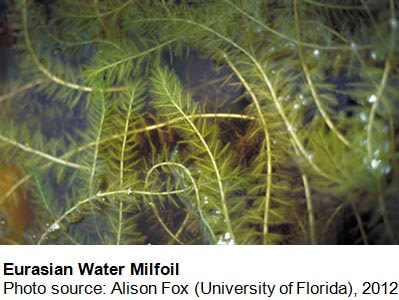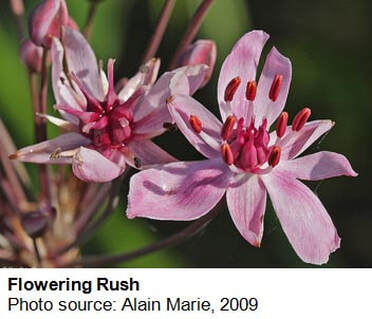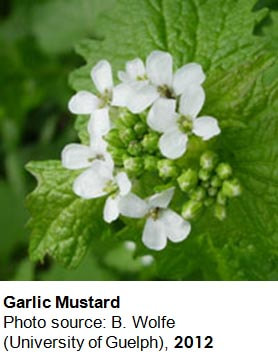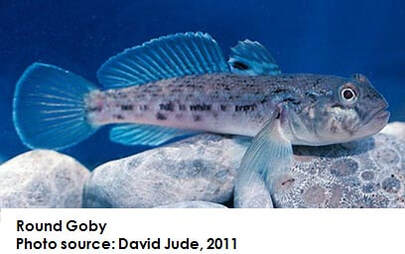Invasive Species
Alien Species vs. Invasive Alien Species:
Species that have become established in areas outside their natural range are known as "alien species". Generally, alien species do not pose a significant risk and many are even beneficial. However; when alien species are capable of causing significant harm to our environment, the economy or to society, they are referred to as "invasive alien species". (ECCC, 2017)
Species that have become established in areas outside their natural range are known as "alien species". Generally, alien species do not pose a significant risk and many are even beneficial. However; when alien species are capable of causing significant harm to our environment, the economy or to society, they are referred to as "invasive alien species". (ECCC, 2017)
Plenty Canada, in partnership with numerous organizations, is working hard to educate the public about the environmental damage caused by invasive species and effective ways to manage these destructive organisms. The devastating impact these non-native species are having on our local biodiversity demands our serious attention and commitment to identify solutions.
Invasive species are generally aggressive and often out-compete species which are native to the environment. Typically humans and/or technology act as vectors, transporting invasive species from their natural habitat to non-native environments. Invasive species are not super organisms looking to take over the world but rather plants and animals without natural bio-controls. Ecosystems are typically regulated by prey-predator relationships in which populations are dependent upon the number of predators and prey. Without the predators found in their natural environment, populations of invasive species are able to distribute without control.
Invading species are distributed most frequently by humans. Aquatic plants and animals are often displaced within the ballast water of international ships or as a result of individuals releasing unwanted pets or live bait. Many terrestrial species are transported in international shipping crates. Invasive plant species are often sold as imported ornamentals at nurseries.
Invasive species are generally aggressive and often out-compete species which are native to the environment. Typically humans and/or technology act as vectors, transporting invasive species from their natural habitat to non-native environments. Invasive species are not super organisms looking to take over the world but rather plants and animals without natural bio-controls. Ecosystems are typically regulated by prey-predator relationships in which populations are dependent upon the number of predators and prey. Without the predators found in their natural environment, populations of invasive species are able to distribute without control.
Invading species are distributed most frequently by humans. Aquatic plants and animals are often displaced within the ballast water of international ships or as a result of individuals releasing unwanted pets or live bait. Many terrestrial species are transported in international shipping crates. Invasive plant species are often sold as imported ornamentals at nurseries.
Some invasive species to watch for in Eastern Ontario:
Asian Longhorn Beetle (Anoplophora glabrapennis)
Common Buckthorn (Rhamnus cayhartica)
Common Reed (Pharagmites australis)
Dog Strangling Vine (Cynanchum rossicum)
Emerald Ash Borer (Agrilus planipennis)
Eurasian Water Milfoil (Myriophyllum spicatum)
Flowering Rush (Botomus umbellatus)
Garlic Mustard (Alliaria petiolata)
Purple Loosestrife (Lythrum salicaria)
Round Goby (Apollonia melanostoma)
Rusty Crayfish (Orconectes rustica)
Zebra Mussel (Dreissena polymorpha)
If you spot an invasive species, please help track distribution by reporting the sighting to: www.invadingspecies.com or by call 1-800-563-7711.
Asian Longhorn Beetle (Anoplophora glabrapennis)
Common Buckthorn (Rhamnus cayhartica)
Common Reed (Pharagmites australis)
Dog Strangling Vine (Cynanchum rossicum)
Emerald Ash Borer (Agrilus planipennis)
Eurasian Water Milfoil (Myriophyllum spicatum)
Flowering Rush (Botomus umbellatus)
Garlic Mustard (Alliaria petiolata)
Purple Loosestrife (Lythrum salicaria)
Round Goby (Apollonia melanostoma)
Rusty Crayfish (Orconectes rustica)
Zebra Mussel (Dreissena polymorpha)
If you spot an invasive species, please help track distribution by reporting the sighting to: www.invadingspecies.com or by call 1-800-563-7711.
Plenty Canada incorporates Indigenous knowledge and experience, in addition to western science, in its efforts to preserve biodiversity. With traditional indigenous cultures focused on the importance of nature, the destruction of native species is of great significance.
Although there are methods in place to remove invasive species, in areas where they have become abundant removal is very difficult. Preventing the spread of invasive species is the most effective way to preserve biodiversity.
Although there are methods in place to remove invasive species, in areas where they have become abundant removal is very difficult. Preventing the spread of invasive species is the most effective way to preserve biodiversity.




